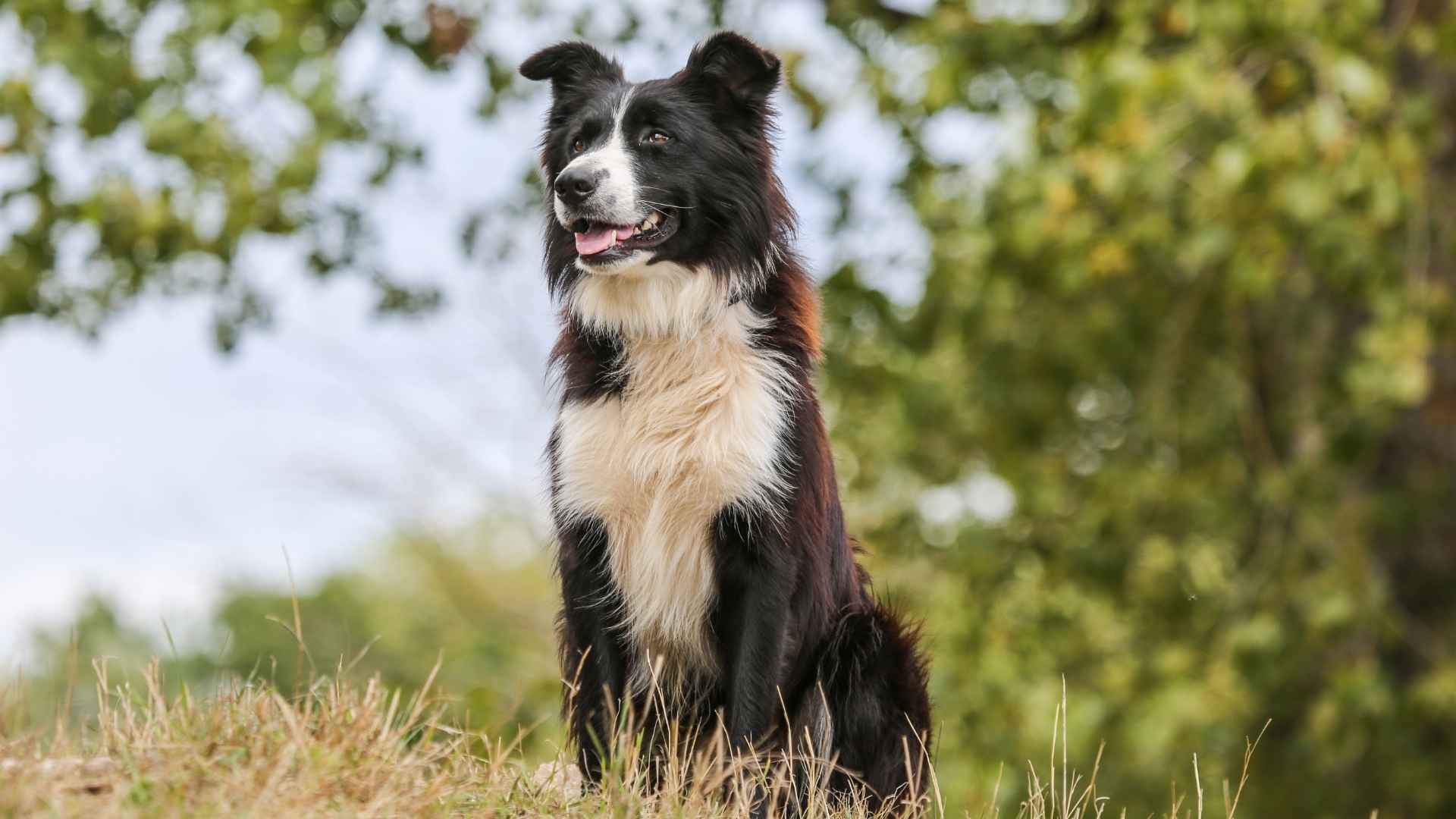Some dogs are naturally blessed with robust health, rarely facing the genetic complications that can plague other breeds. While every pup is unique and no breed is entirely immune to illness, certain breeds are renowned for producing consistently healthy puppies.
These breeds often benefit from strong genetics, fewer hereditary conditions, and centuries of careful breeding that prioritized vitality and resilience.
Choosing a breed known for healthy puppies can bring peace of mind for future owners. Not only does it mean fewer vet visits for major issues, but it also ensures that your dog is likely to enjoy a longer, happier life by your side. Many of these breeds thrive thanks to their active lifestyles, strong immune systems, and balanced temperaments, all of which contribute to their overall well-being.
In this article, we’ll explore dog breeds that typically produce healthy, energetic puppies with fewer known health risks. Whether you’re a first-time pet parent or a seasoned dog lover, these breeds may be the perfect fit for a happy, healthy canine companion.
Dog Breeds With Consistently Healthy Puppies
1. Havanese
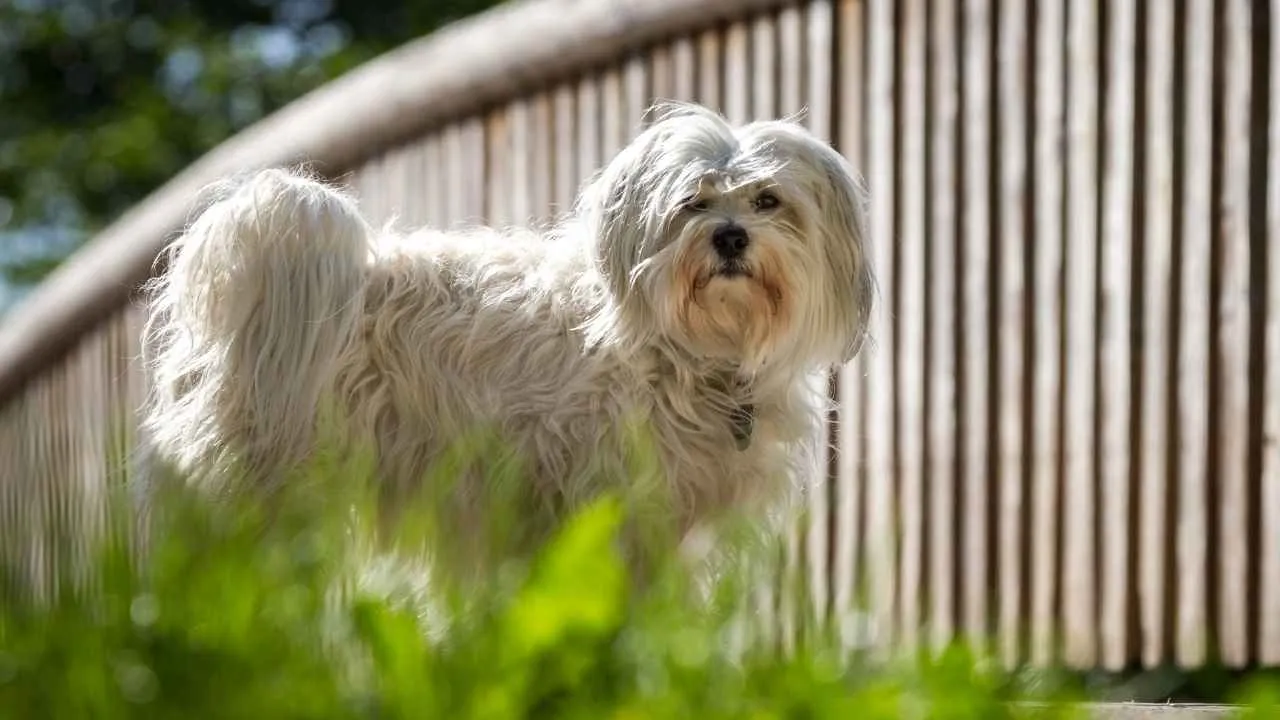
The Havanese, often called the “Velcro dog” of the toy group, is the only breed native to Cuba, prized for its cheerful nature and sturdy yet small frame. WebMD notes that they typically stand between 8.5 and 11.5 inches tall, though the preferred height for the breed is between 9 and 10.5 inches.
This silky-coated charmer is known for its springy gait and affectionate personality. With a lifespan of 14 to 16 years, Havanese dogs are generally healthy, though they may be predisposed to minor concerns like patellar luxation.
Their long, wavy coats come in an array of colors, and their expressive eyes and curled, plumed tails add to their irresistible appeal.
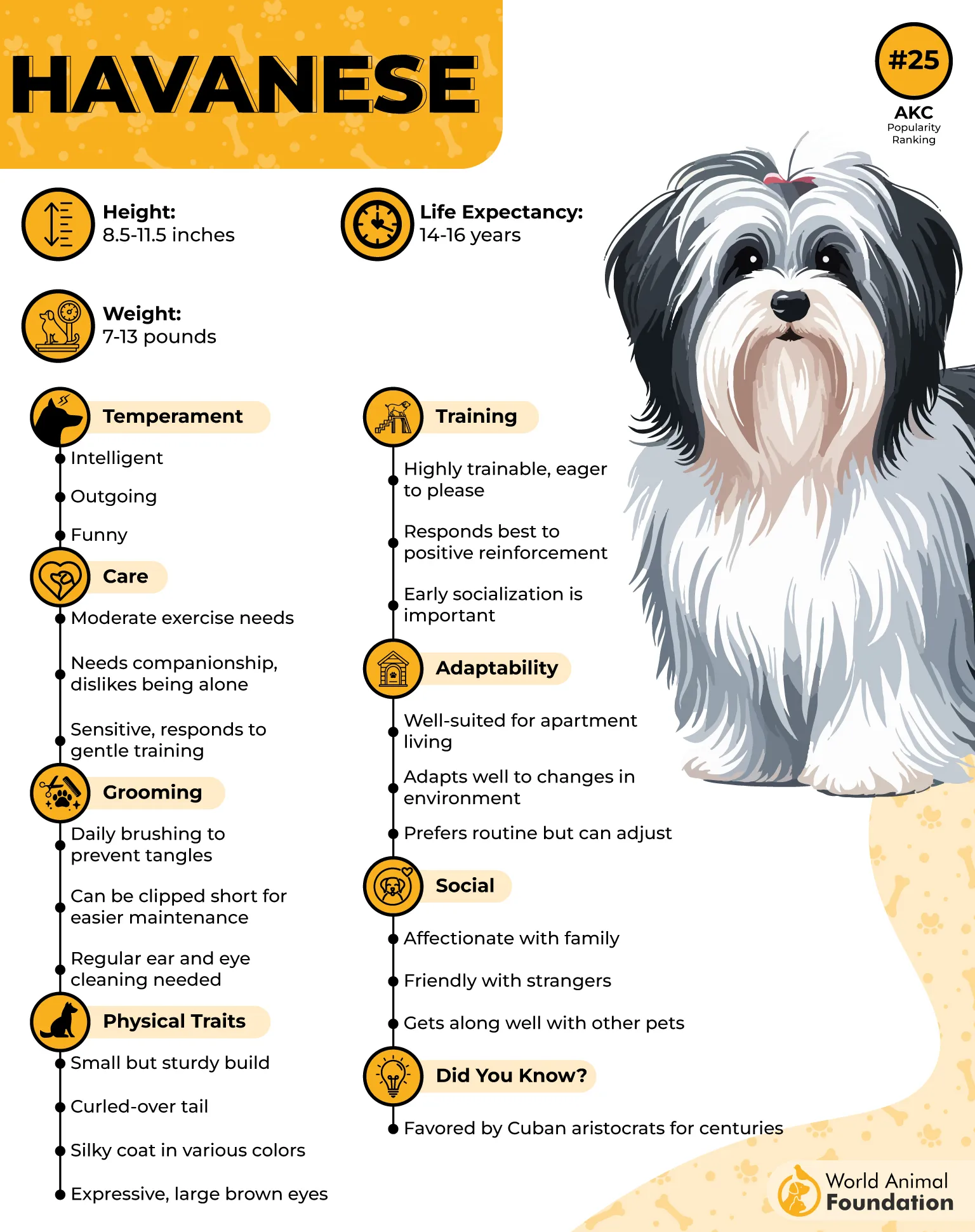
Care Needs
Despite their small size, Havanese aren’t low-maintenance. Their flowing coats demand brushing several times a week to prevent mats, and many owners opt for shorter trims to ease upkeep. Daily walks and 30 minutes of play keep them happy and fit, while mental stimulation curbs boredom.
This breed bonds deeply with people and dislikes being left alone for long periods, as it can lead to separation anxiety. Regular dental care and routine vet visits help maintain their long-term health.
Did you know? Charles Dickens and Ernest Hemingway both adored this breed, with Hemingway even owning a Havanese named Blackie.
2. Bichon Frise
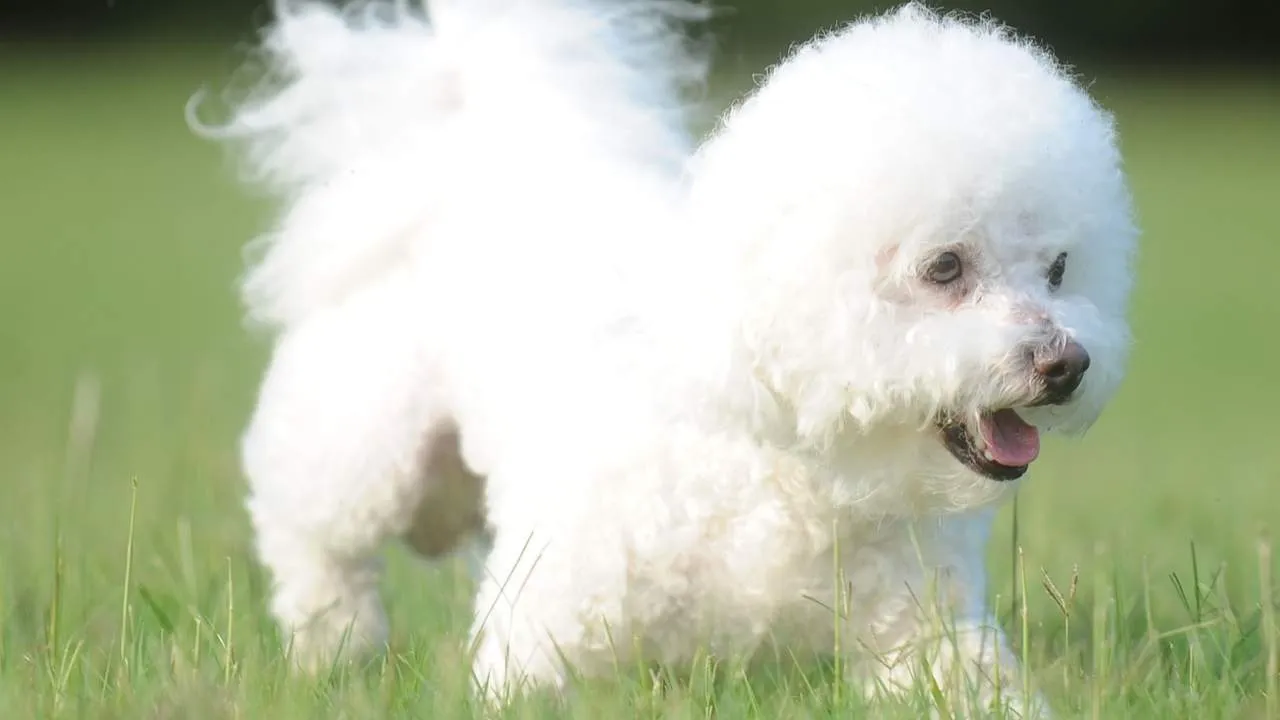
The Bichon Frise, also known as the “Tenerife” or simply “Bichon,” is a small yet sturdy breed with an unmistakable charm. Originating from the Mediterranean region and popularized in Europe by royalty, these dogs became beloved companions in royal courts and beyond. ‘
Standing between 9.5 to 11.5 inches tall and weighing 12 to 18 pounds, they are covered in a fluffy white coat that resembles a living cotton ball. PetMD explains that the Bichon Frise is playful and highly social. They especially enjoy engaging with their favorite toys and picking up new tricks.
Their bright eyes and joyful disposition make them natural entertainers, while their 14–15 year lifespan is a testament to their overall robust health. Known for being affectionate and playful, they thrive on attention and companionship.
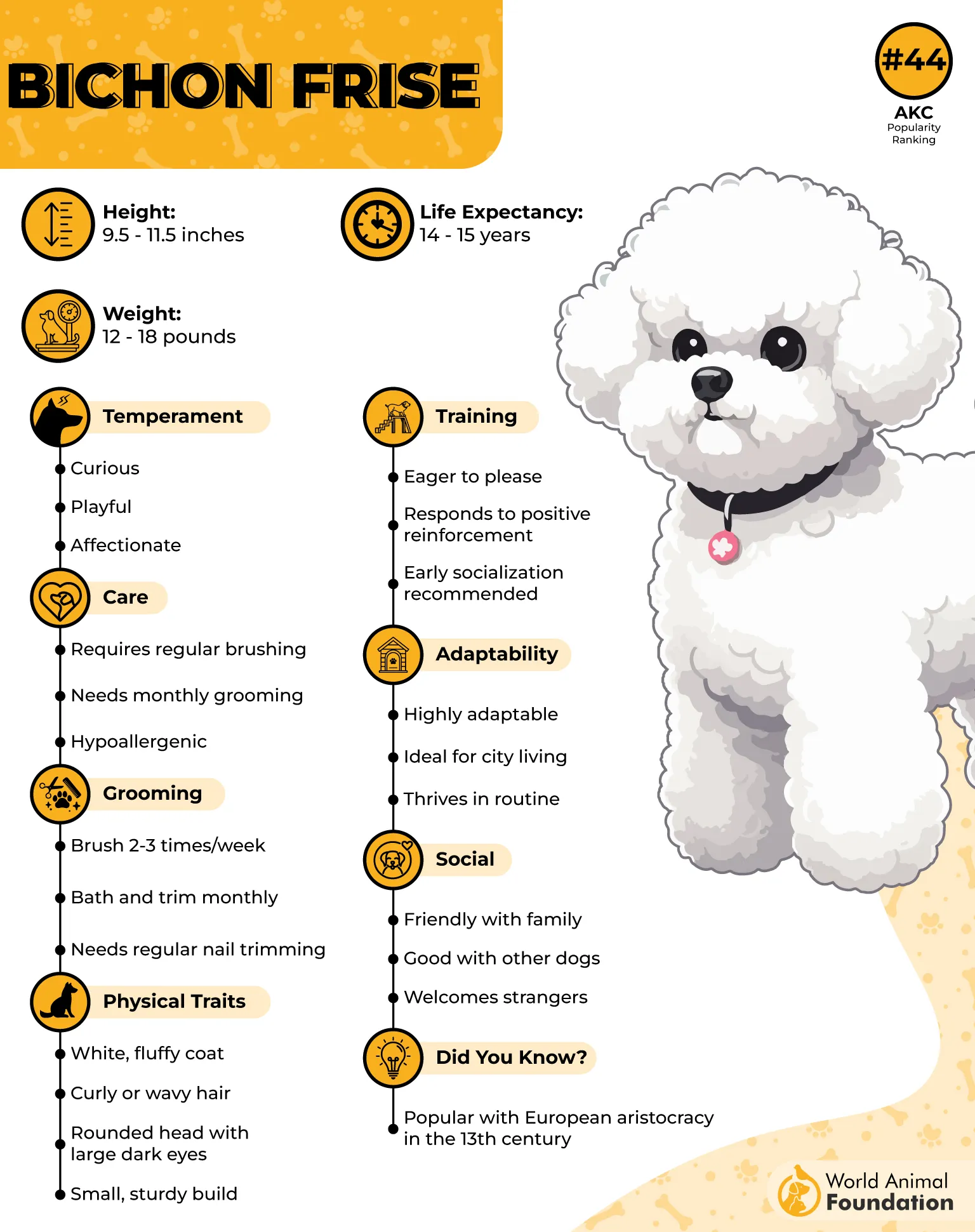
Care Needs
Bichons require consistent grooming to maintain their lush, curly coats—brushing two to three times a week is ideal, though daily care keeps mats at bay. Professional grooming every 4–6 weeks ensures they stay neat and healthy.
Moderate exercise, like short walks and indoor play, keeps them fit without overexertion. Owners should also monitor for minor health issues like allergies. Regular vet checkups and a balanced diet will help them stay in peak condition.
Fun Fact: French royalty adored the Bichon Frise so much that King Henry III reportedly carried his in a basket around his neck.
3. Chihuahua
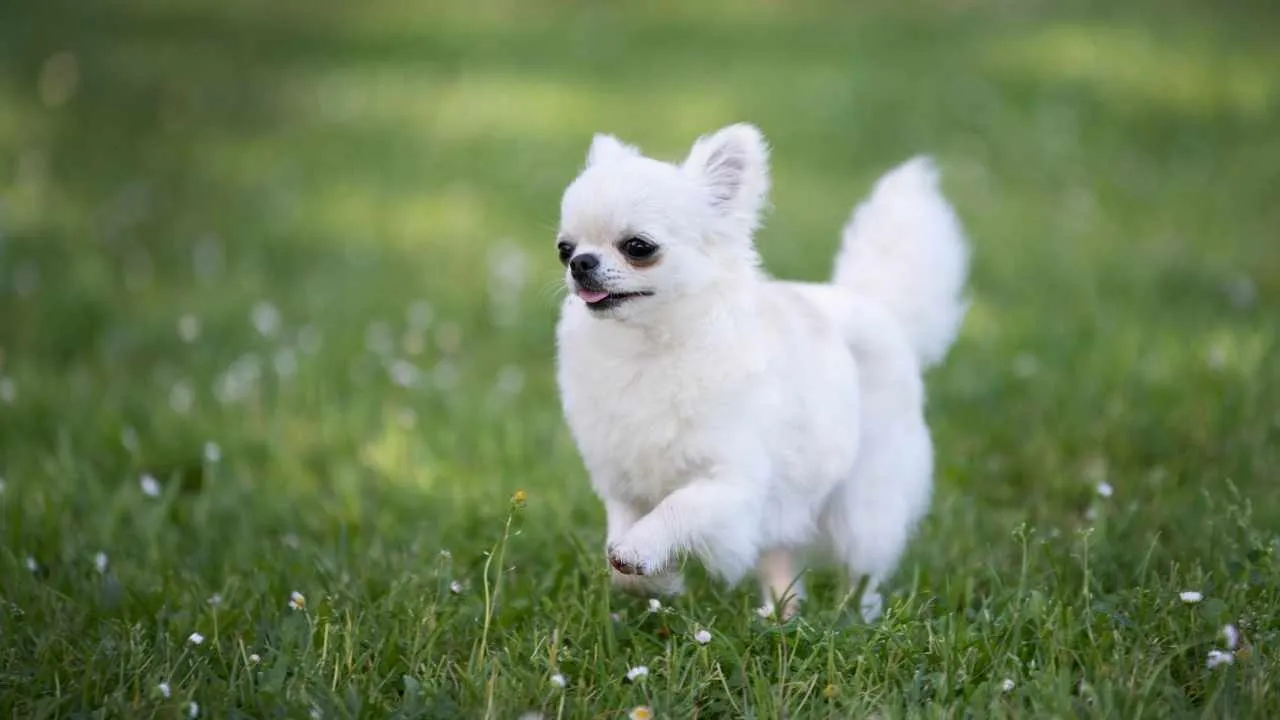
The Chihuahua, affectionately called the “Chi,” is the smallest recognized dog breed, standing just 5–8 inches tall and weighing up to 6 pounds. Originating from Mexico, this spirited breed descends from the ancient Techichi, a dog cherished by the Toltec civilization as early as the 9th century.
Chihuahuas are bold, lively, and fiercely loyal, packing an outsized personality into their tiny frames. Known for their longevity, many live 14–16 years, with some even reaching 20. The AKC describes the Chihuahua as a well-proportioned, elegant little dog with a terrier-like personality.
Their coats can be short or long and come in a variety of colors and patterns, while their large, erect ears and prominent eyes give them a signature “saucy” expression. Though delicate in size, their confidence and alert nature make them excellent companions and watchdogs.
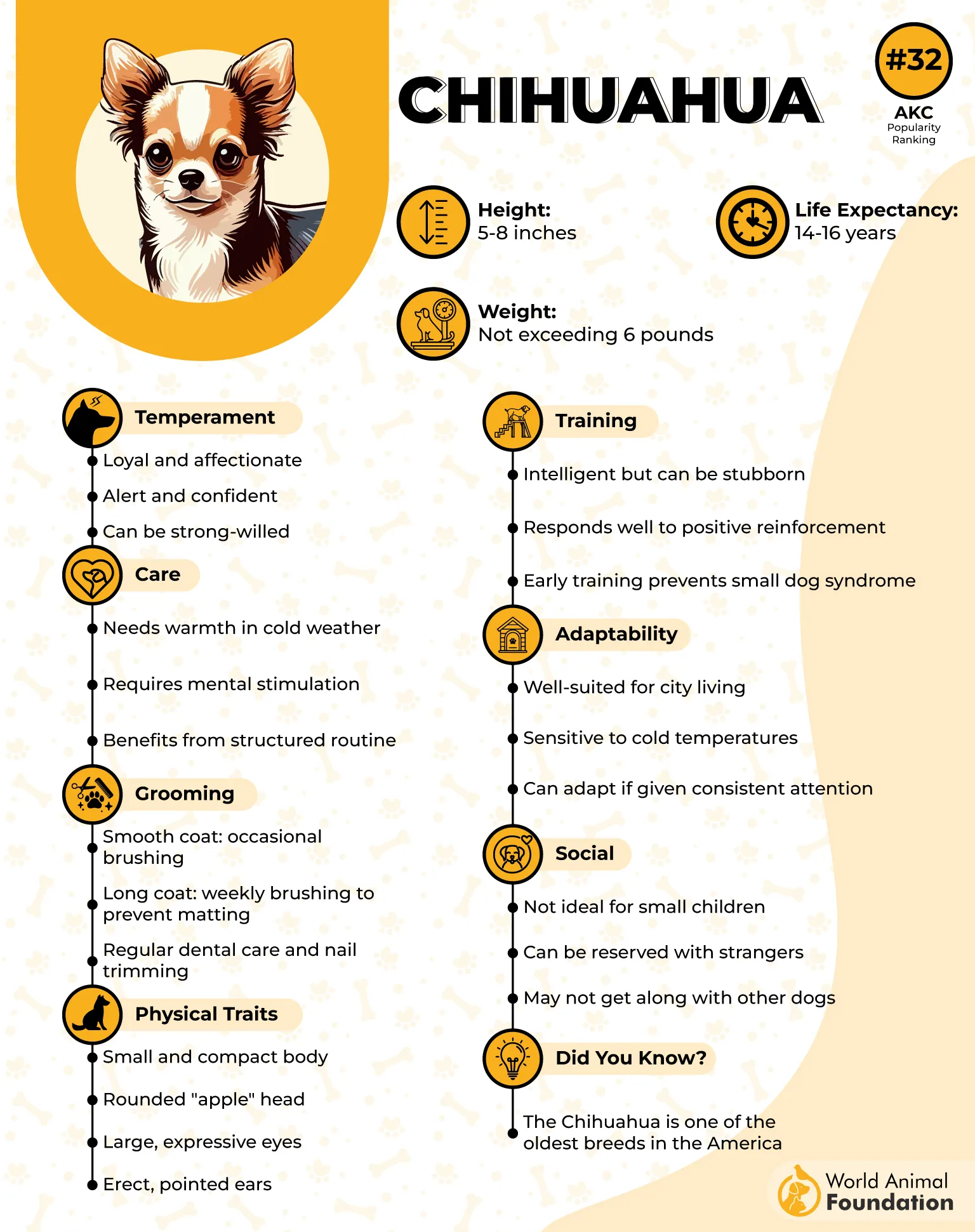
Care Needs
These small dogs may be small, but they require consistent care to thrive. They benefit from daily walks and play sessions to prevent obesity and burn off their high energy. Because of their tiny stature, rough handling or high jumps can cause injuries, so supervision around children and other dogs is crucial.
Dental care is especially important—these toy dogs need daily tooth brushing to avoid common dental issues. Grooming depends on coat type; short-haired Chihuahuas need occasional brushing, while long-haired ones require more frequent maintenance. Regular vet check-ups help monitor potential concerns like patellar luxation and heart issues.
Did you know? A Chihuahua named Gidget became the iconic face of Taco Bell commercials in the late 1990s, turning the breed into a pop culture phenomenon.
4. Poodle
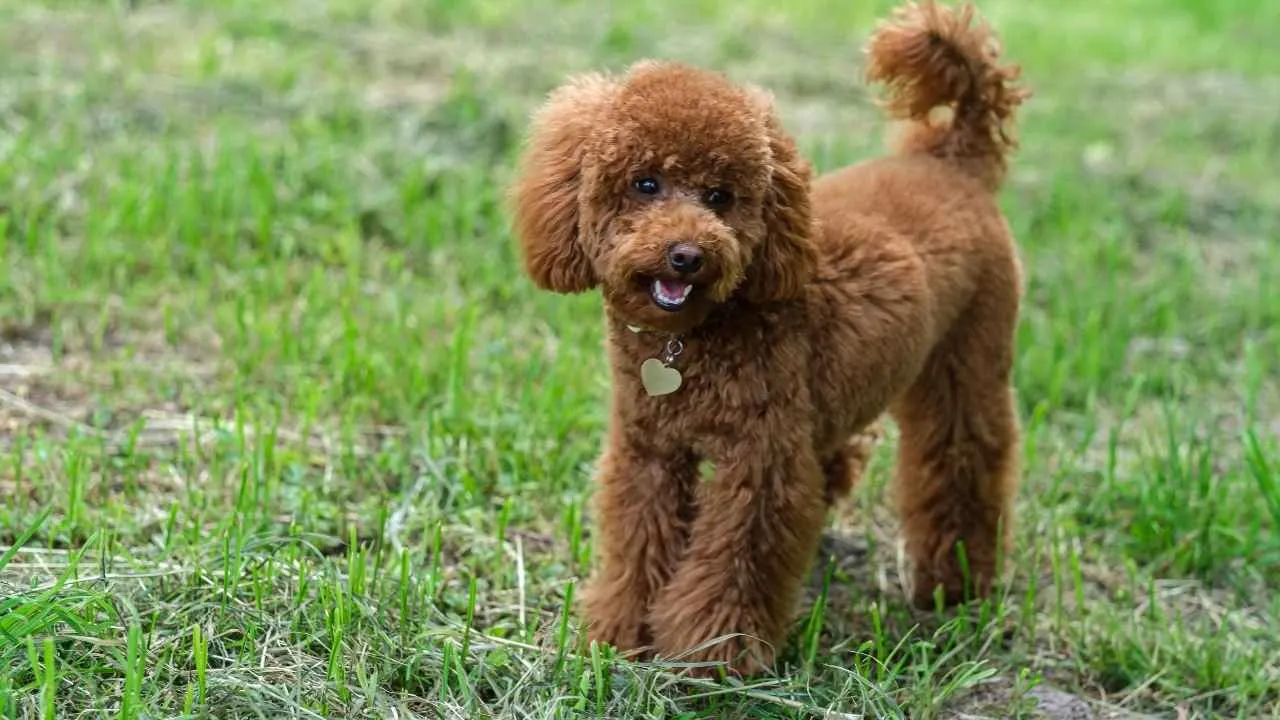
Graceful, intelligent, and full of charm, the Poodle is one of the healthiest and most versatile breeds in the dog world. Known in three sizes—Standard, Miniature, and Toy—this breed originated as a skilled water retriever in Europe, combining beauty with athleticism.
Standard Poodles often stand over 15 inches tall and weigh 40–70 pounds, while Miniatures and Toys remain smaller and lighter.
With their curly, hypoallergenic coats, these smart dogs aren’t just striking—they’re also a relief for allergy-sensitive owners. Remarkably, they boast an impressive life span of 10 to 18 years, making them one of the longest-living dog breeds. Their keen intelligence and high energy mean they excel as performers, companions, and even therapy dogs.
Care Needs
These intelligent breeds need around an hour of daily exercise, enjoying activities like swimming, running, and retrieving. Grooming is a must—their dense, curly coat requires regular brushing and professional trims to stay mat-free.
Their bright minds demand mental stimulation, so training, puzzles, and play are essential to prevent boredom-driven behaviors. Early socialization helps them grow into well-mannered, confident dogs, and consistent vet visits can help spot joint or eye issues early.
Did you know? Every Poodle’s lineage traces back to its roots as a hunting and retrieving dog, proving they’re far more than just show-ring stars.
5. Shiba Inu
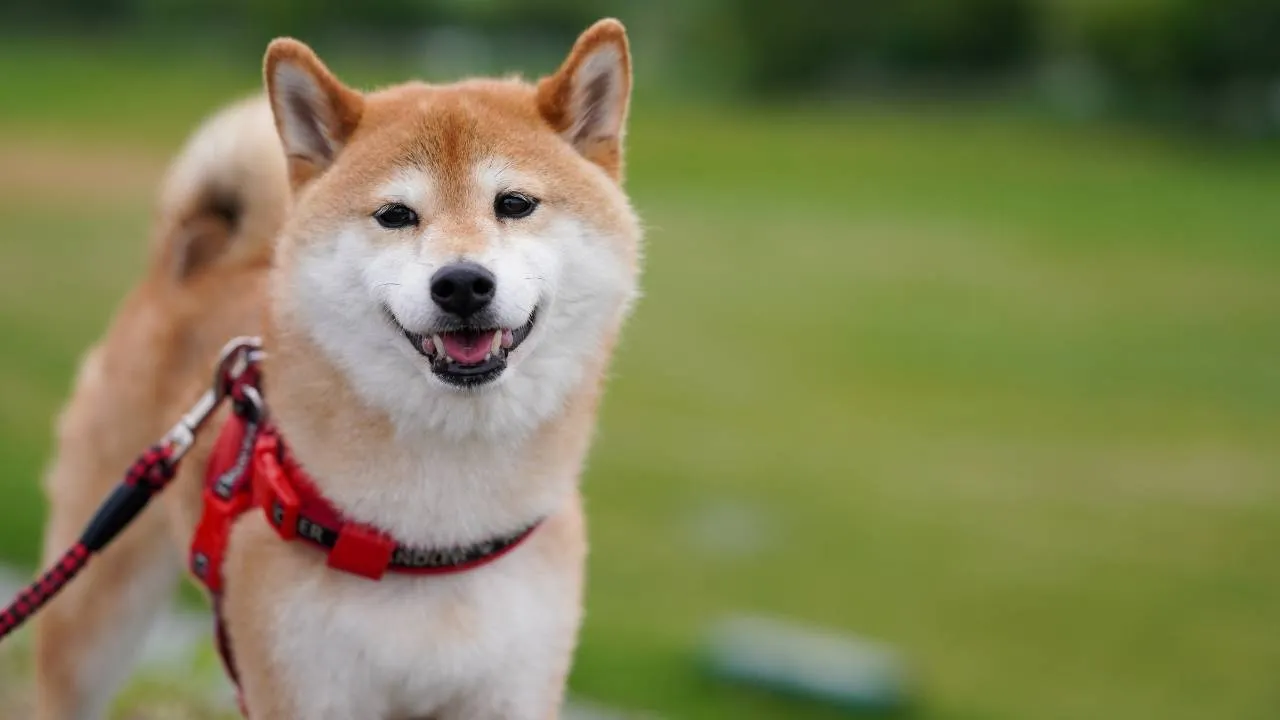
The Shiba Inu, often simply called the Shiba, is one of Japan’s oldest and most cherished breeds, dating back over 2,000 years. Originally bred for hunting small game in rugged mountain terrain, these compact dogs weigh between 17 and 23 pounds and stand 13.5 to 16.5 inches tall.
Their iconic fox-like face, erect ears, and tightly curled tail give them a striking, alert appearance. With a lifespan of 13 to 16 years, Shibas rarely face severe hereditary health concerns.
They belong to the Non-Sporting group and are prized for their independence, intelligence, and confident personalities—yet they balance their strong will with deep affection for their families.
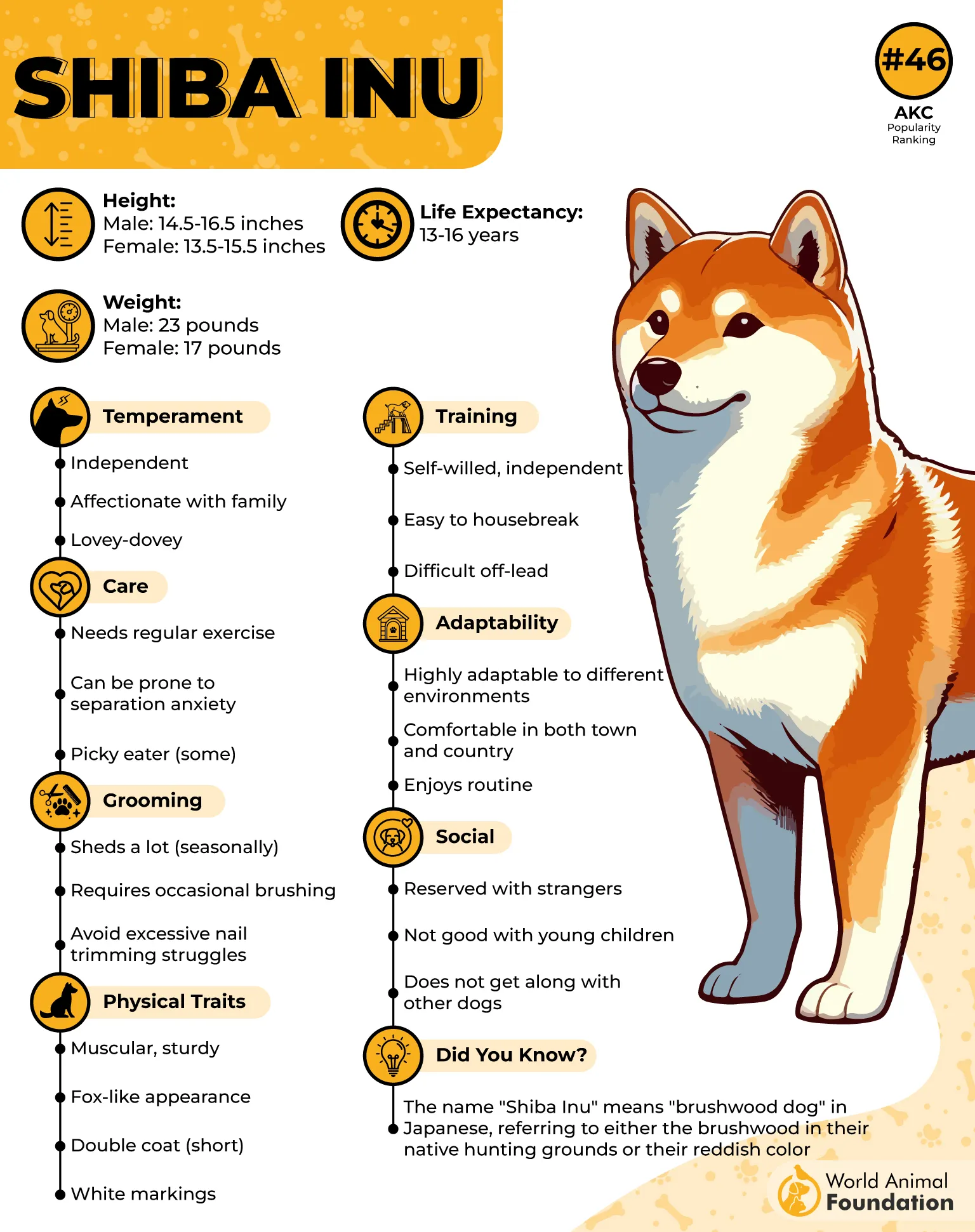
Care Needs
Shiba Inus are generally low-maintenance but thrive with regular exercise, needing daily walks and mental stimulation to stay happy. Their plush double coat sheds seasonally and requires weekly brushing, with extra grooming during heavy shedding periods.
While typically robust, routine vet checkups help catch potential issues like hip dysplasia or eye concerns early. Because they are smart and curious, consistent training is essential—boredom can lead to mischievous habits.
Did you know? The famous Doge meme that sparked the cryptocurrency Dogecoin was inspired by Kabosu, a real Shiba Inu who became an internet legend.
6. Border Collie
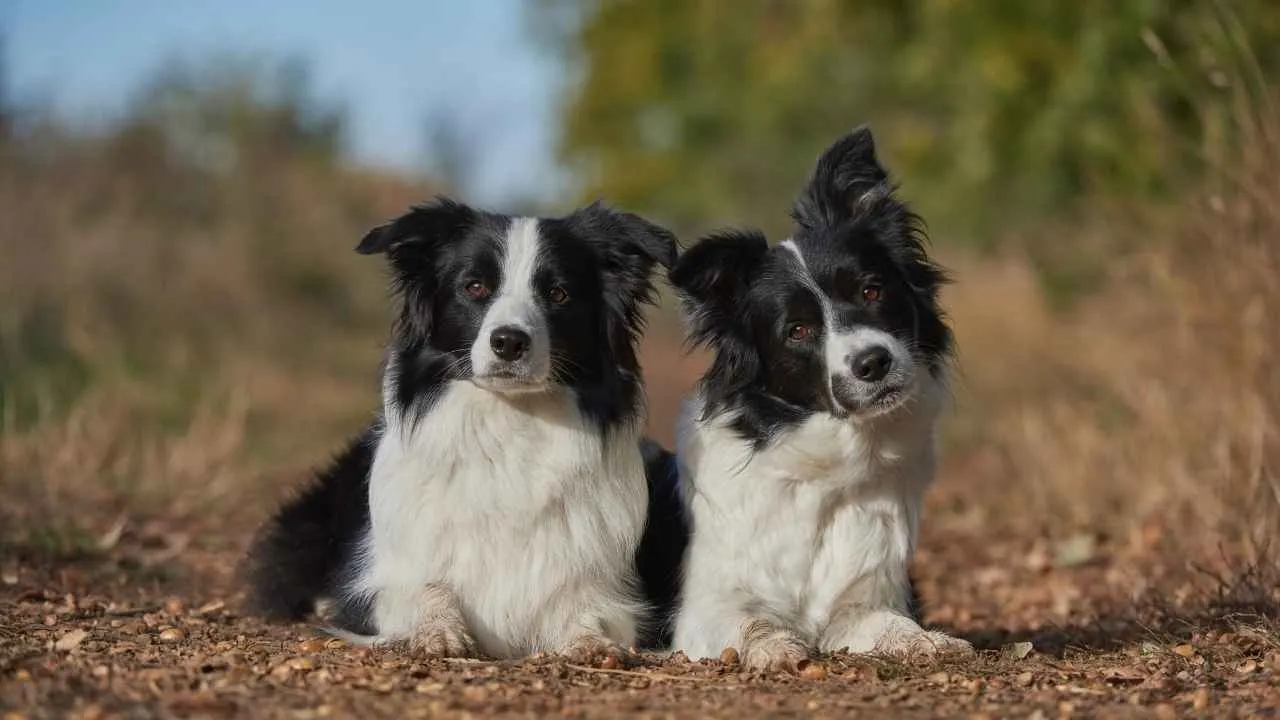
The Border Collie, sometimes called the “Scotch Collie” or “Welsh Sheepdog,” hails from the rugged borderlands of Scotland and England. Bred over centuries by crossing Roman drover dogs with Viking spitz-types, they became unmatched herders, prized for their speed, intelligence, and focus.
Today, they stand about 18–22 inches tall and weigh between 30–55 pounds, with striking coats ranging from classic black-and-white to merle or sable. Known for their piercing stare—often called “the eye”—and tireless drive, Border Collies have lifespans of 12–15 years and remain one of the most agile breeds.
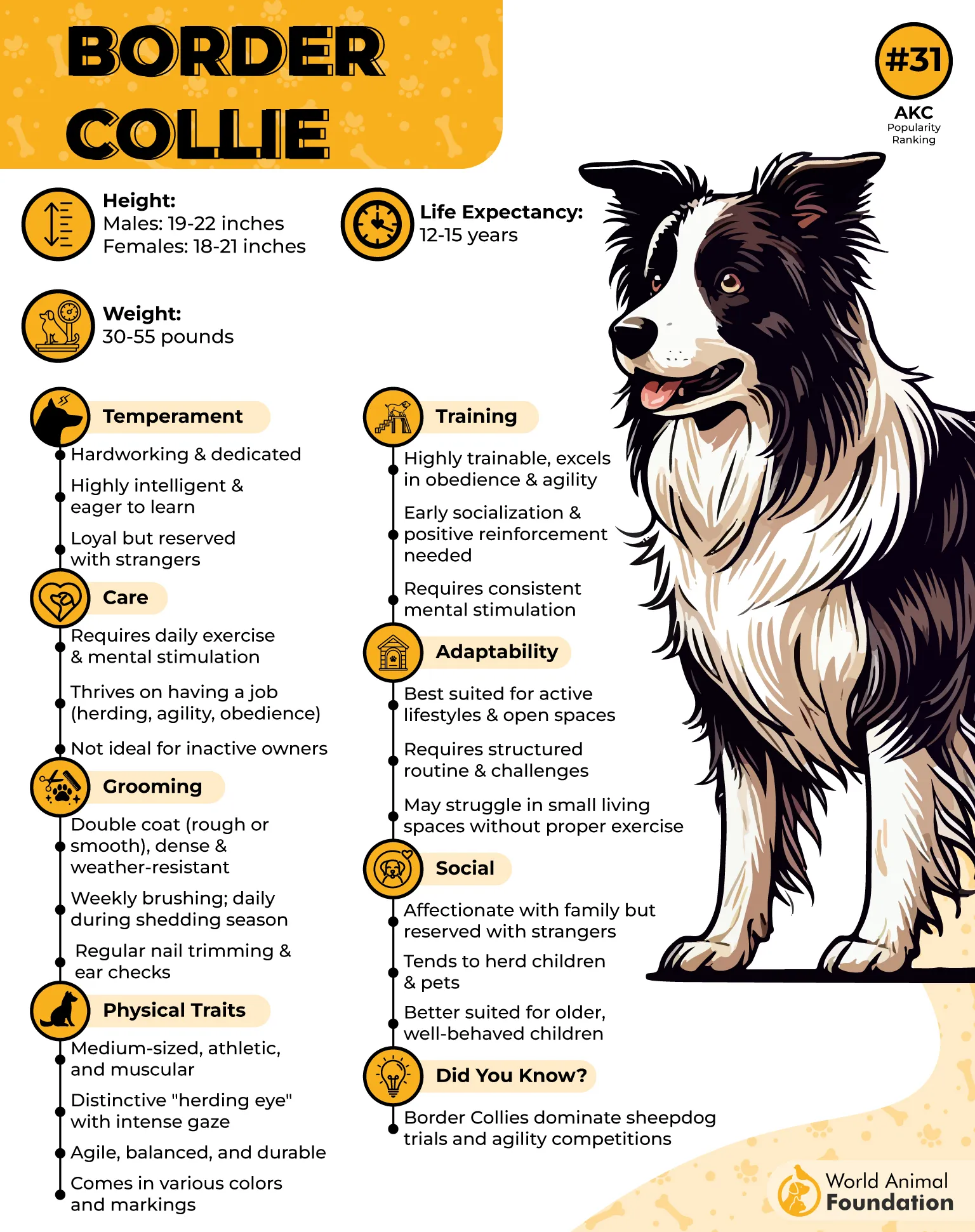
Care Needs
Border Collies thrive on daily challenges—both mental and physical. They need at least 90 minutes of exercise every day, which might include herding games, agility courses, or long runs. Without this stimulation, boredom can lead to destructive habits like chewing or digging.
Grooming is moderate; their rough or smooth double coats shed seasonally and benefit from weekly brushing to prevent matting. Pet owners should also keep up with vet checks to monitor for rare but known risks like collie eye anomaly or epilepsy.
Did you know? A Border Collie named Chaser earned the title of “the world’s smartest dog” for recognizing over 1,000 object names.
7. Beagle
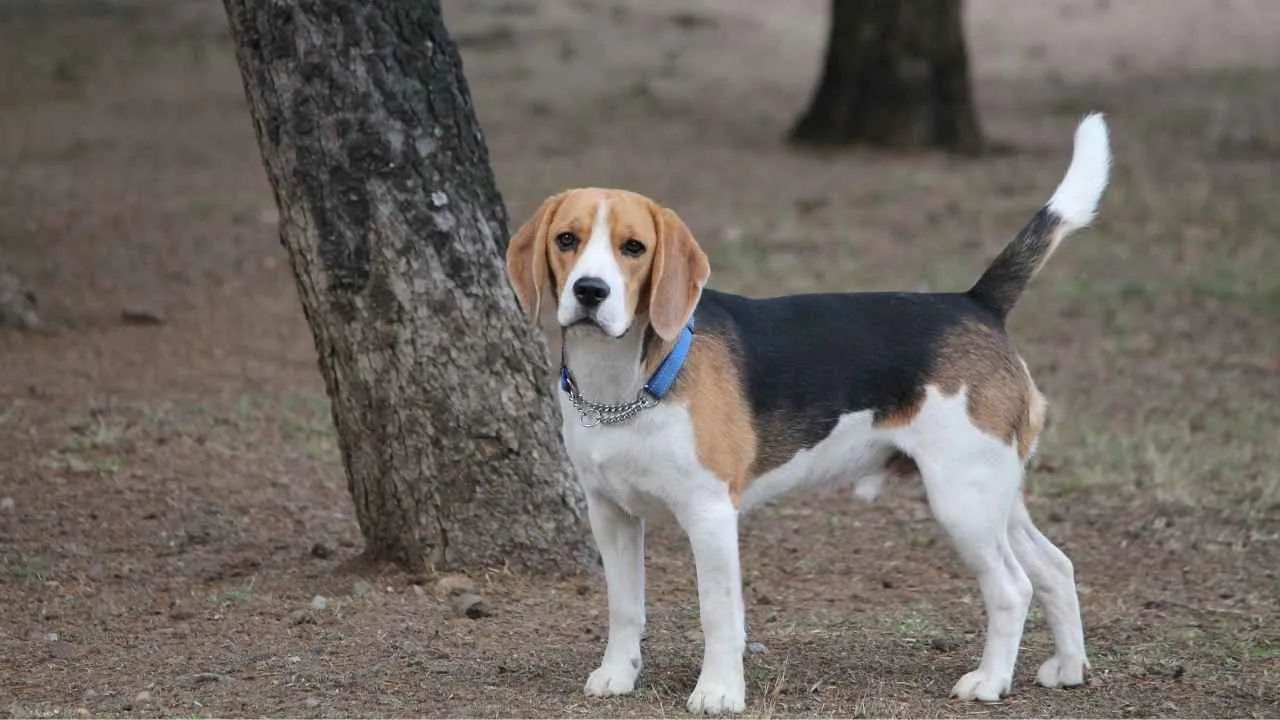
The Beagle, often affectionately referred to simply as “Beagle,” is a small yet sturdy hound originating from Great Britain. With a compact frame standing between 13 to 15 inches and weighing 20 to 30 pounds, this breed has a long history as an exceptional scent hound, once used extensively for hunting rabbits and hares.
Its close resemblance to a miniature foxhound, paired with large, soulful brown eyes and floppy ears, adds to its charm. Beagles are energetic, curious, and companionable dogs with an average lifespan of 10 to 15 years. Their strong hunting roots and fearless temperament make them engaging pets who thrive in active homes.
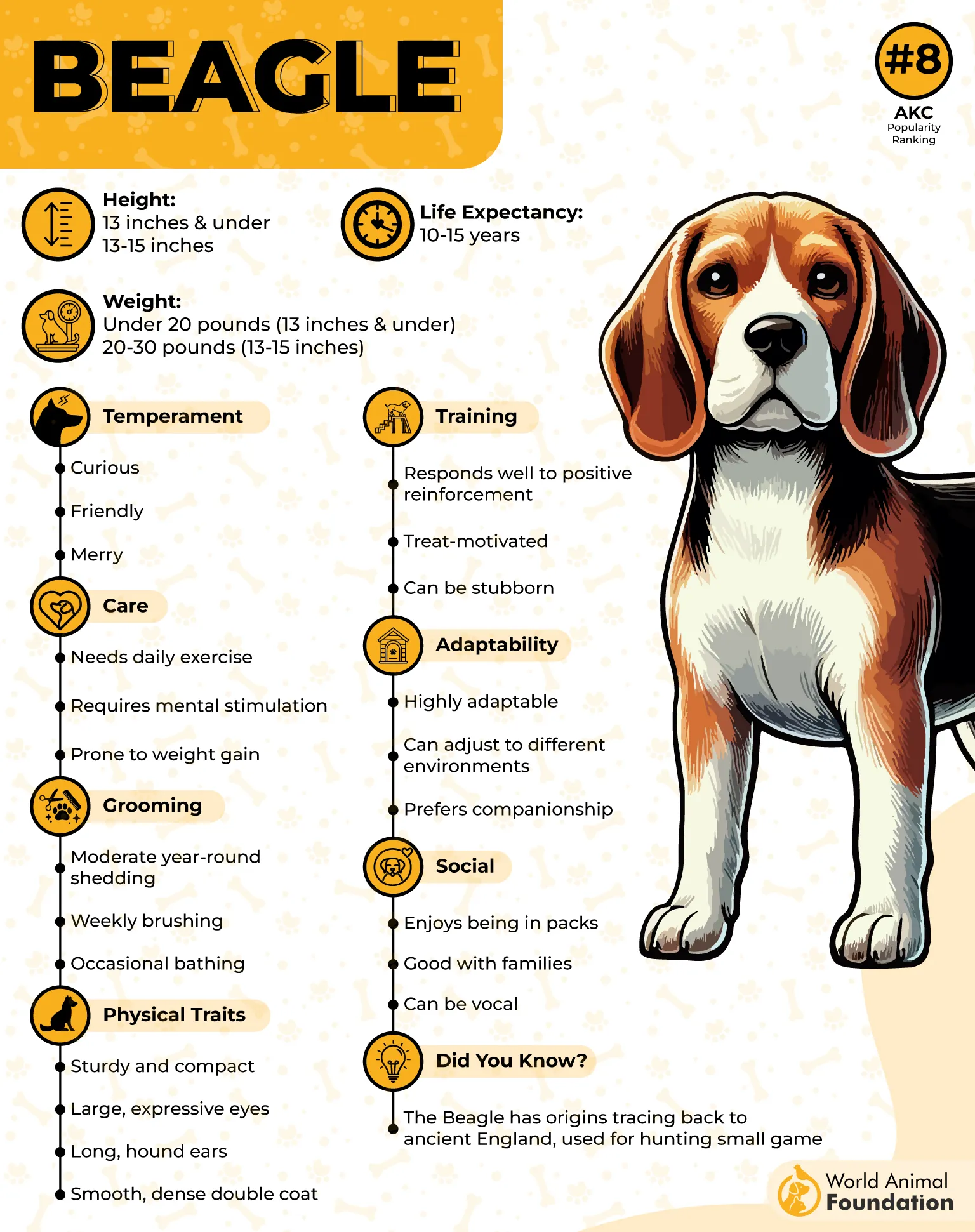
Care Needs
Beagles require a balanced routine of grooming, diet, and exercise to maintain their well-being. Their floppy ears make them prone to infections, so regular ear cleaning is essential. Because they are scent-driven and food-motivated, Beagles can overeat; structured meals and portion control are crucial to avoid obesity.
These lively dogs also need daily physical activity and mental stimulation to channel their energy constructively and prevent unwanted behaviors. Their short, dense coat is low-maintenance but benefits from weekly brushing to minimize shedding.
Did you know? The U.S. Customs and Border Protection famously employs a “Beagle Brigade” to sniff out banned agricultural items at airports, showcasing their unmatched scenting skills.
Conclusion
Ultimately, consistently robust puppies come from thoughtful breeding and diligent care. Responsible programs prove that even purebred dogs can stay healthy when genetic screening, diverse line‑pairings, and early socialization converge.
Whether you bring home the only dog breed on your wish list or consider mixed-breed dogs for hybrid vigor, focus on balanced nutrition, routine vet checks, and ample exercise. These habits maintain a healthy weight, strengthen immunity, and minimize the few health issues that might still surface in otherwise sound litters.
Among the stand‑outs, the Australian Cattle Dog—a dog breed native to Australia—earns praise for longevity and stamina; the German Shorthaired Pointer and Australian Shepherd join it as athletic hunting dogs renowned for versatility, obedience, and hearts that outlast the trail. Each healthy breed shows that, with careful selection and lifelong enrichment, vigor isn’t luck but the predictable product of science, stewardship, and love.


